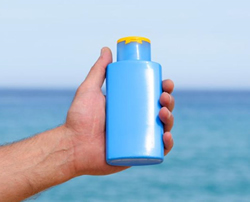Claire Loewen* says a discovery about the structure of melanin has brought scientists one step closer to developing a new, potentially ultra-protective sunscreen derived from a biological substance found in nearly all organisms.
 The new research marks a major advance in understanding the fundamental structure of melanin and one of its components that turns light into heat, protecting the body from sun damage.
The new research marks a major advance in understanding the fundamental structure of melanin and one of its components that turns light into heat, protecting the body from sun damage.
Melanin, the pigment that gives humans their skin, eye, and hair colour, is the body’s first and best natural defence against the sun’s harmful rays.
Cosmetics companies have long tried to harness the protective powers of natural and synthetic melanin for use in chemical sunscreens and other personal care products.
For example, melanin could, in theory, be used to produce a radiation barrier that augments skin care products by matching a more diverse range of natural skin tones.
But melanin is so notoriously unstable and difficult to study that, thus far, scientists have not been able to see what it looks like at the molecular level, resulting in a slow, trial-and-error approach to its potential use in personal care products.
“As we gain a better understanding of the structure of melanin, we should be able to predictably make alternatives that perform better than what is currently available,” says Jean-Philip Lumb, an associate professor in the chemistry department at McGill University and one of the lead authors of the paper.
The study found that the melanin component converted light into heat from all wavelengths, spanning the ultraviolet to the infrared, offering a broad spectrum of protection.
The molecule was also remarkably small, which the researchers say has practical benefits because the number of atoms needed to provide this level of sun protection is fewer than anything reported up to now.
“We’ve taken a major step forward in understanding a new mechanism for how melanin can serve as a sunscreen,” Lumb says.
Indole-5,6-quinones display hallmark properties of eumelanin by Jean-Philip Lumb et al., was published in Nature Chemistry.
*Claire Loewen, Media Relations Officer, McGill University.
This article first appeared at mcgill.ca






